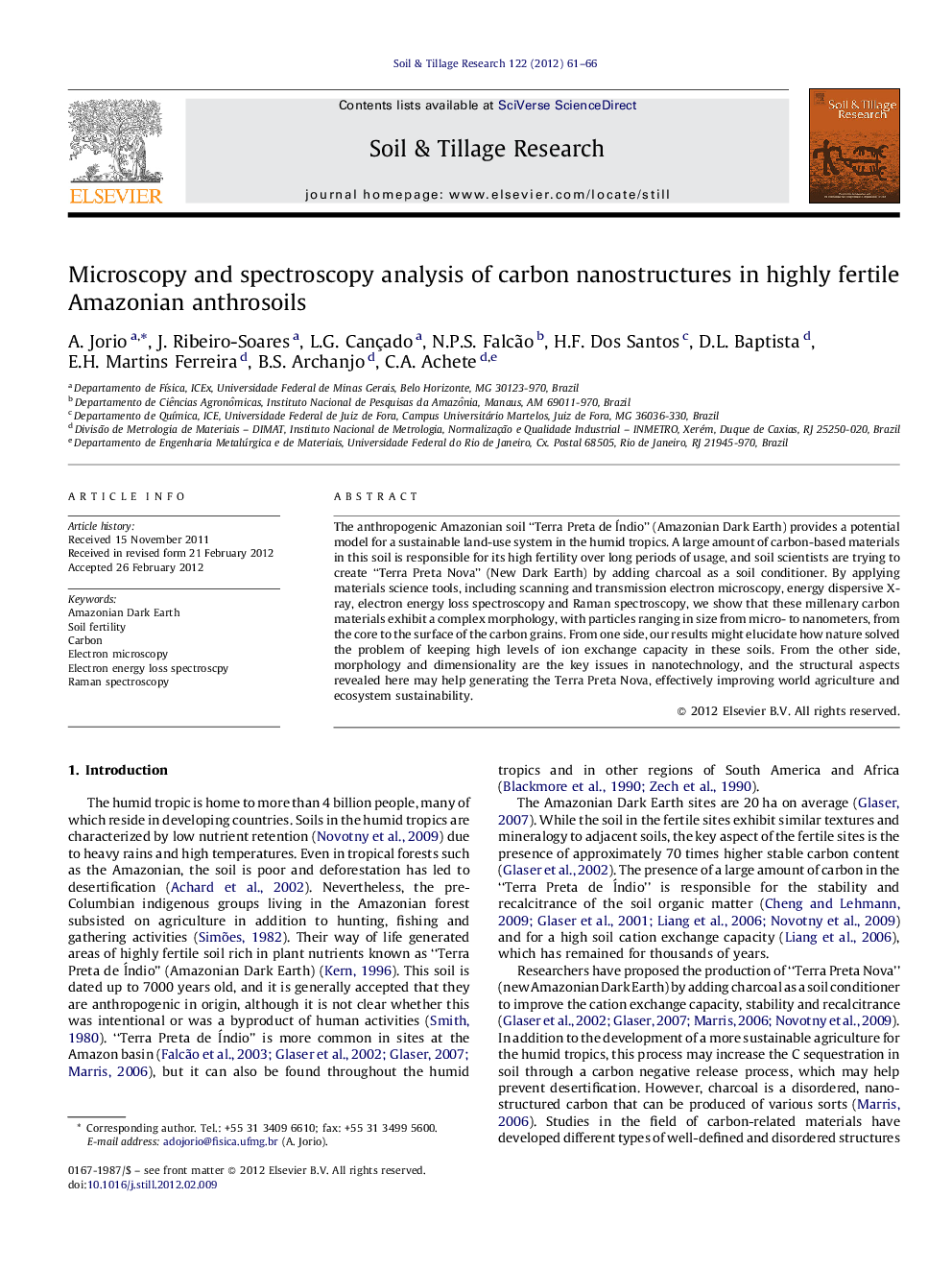| Article ID | Journal | Published Year | Pages | File Type |
|---|---|---|---|---|
| 306016 | Soil and Tillage Research | 2012 | 6 Pages |
The anthropogenic Amazonian soil “Terra Preta de Índio” (Amazonian Dark Earth) provides a potential model for a sustainable land-use system in the humid tropics. A large amount of carbon-based materials in this soil is responsible for its high fertility over long periods of usage, and soil scientists are trying to create “Terra Preta Nova” (New Dark Earth) by adding charcoal as a soil conditioner. By applying materials science tools, including scanning and transmission electron microscopy, energy dispersive X-ray, electron energy loss spectroscopy and Raman spectroscopy, we show that these millenary carbon materials exhibit a complex morphology, with particles ranging in size from micro- to nanometers, from the core to the surface of the carbon grains. From one side, our results might elucidate how nature solved the problem of keeping high levels of ion exchange capacity in these soils. From the other side, morphology and dimensionality are the key issues in nanotechnology, and the structural aspects revealed here may help generating the Terra Preta Nova, effectively improving world agriculture and ecosystem sustainability.
► Interdisciplinary nanotechnology approach to study Amazonian Dark Earth carbon. ► Electron microscopy/diffraction gives the chemical contents and morphology. ► Electron and optical spectroscopy elucidates the primary structure. ► Comparative analysis with charcoal and turf shows structural differences. ► We discuss the importance of the 2–12-nm-scaled morphological aspects.
